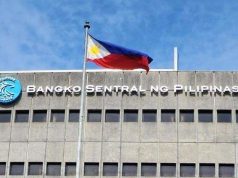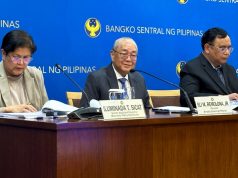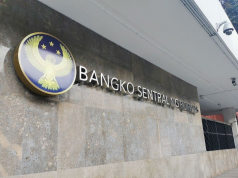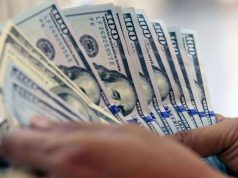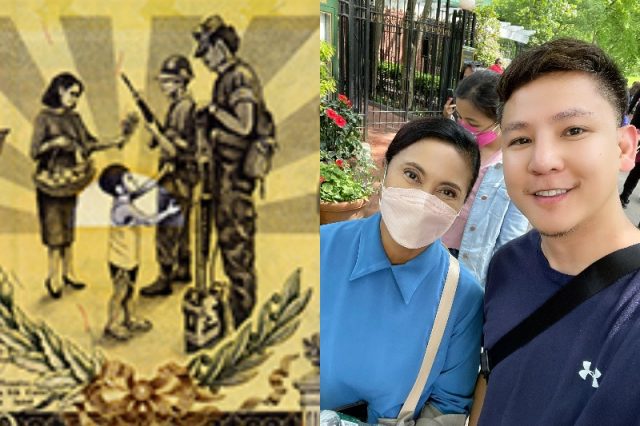
The boy—now a grownup—who appears in the famous 1986 photo that used to be printed at the back of the old P500 bill recently met Vice President Leni Robredo in New York.
Nurse Angelo Gutierrez on May 21 chanced upon Robredo at Central Park, where she and her daughters went for a stroll days after daughter Jillian Robredo‘s graduation from New York University.
Based on the vice president’s Instagram account, a New York-based Filipino photographer accompanied them in Central Park and Brooklyn and took “the best pictures” of them.
Gutierrez happened to be in the same area as well.
“Bumped into the Vice President of the Philippines,” he shared on Facebook with a smiling-face-with-hearts emoji.
“Thank you for being so approachable and kind! God bless you! Leni Gerona Robredo #Starstruck,” Gutierrez added, tagging Leni’s account.
His post has earned 14,000 likes and “love” reactions so far.
It was reshared by educator Gabby Lopez, who said that Gutierrez was his former student in graduate school.
He also shared a screengrab of Gutierrez’s message to him, which reads:
“Dean! Nakita ko si VP Leni here in NYC! I saw that you are her friend (on) FB. I messaged her and told her that I was that boy at the back of the old 500 peso bill. Sana mabasa niya (smiling face emoji) I love and support her so much…”
Lopez saw the message which he said was from his “PLM MBA graduated former student Jell-o Gutierrez in NY.”
“He is the boy giving flowers to the peace-loving kawal ng bayan in our P500 bill. Pax et Bonum. He is also a former co-seminarian at Our Lady of Guadalupe Minor Seminary. Ave Maria. Salve Regina. Viva VP Leni Gerona Robredo,” he wrote.
Lopez further confirmed that Gutierrez’s image on the old P500 bill was based on a real picture of the latter giving flowers to a soldier during the People Power Revolution.
According to historian Manuel Quezon III, the photo was taken by John Chua and can be seen in Monina Allarey Mercado’s book, “People Power, an Eyewitness History: The Philippine Revolution of 1986.”
Another Twitter user shared a page that featured the young Gutierrez.
Page 169 in the People Power Book. pic.twitter.com/EhxjLNZhqK
— Guitar Dev (@guitardev1) May 22, 2022
It has a text which reads:
“Ten deep in many places, a human wall against a line of seated Marines defines the stalement, far left. As Marines await orders to attack Crame and as civilians block their way, it is the young people who make the first moves—a child offers some stalks of flowers to a soldier and a young girl moves in with a plea, left and above.”
The old P500 banknote immortalized the child-and-soldier moment and featured it on the reverse side.
A note from the Bangko Sentral ng Pilipinas reads:
“Aquino, as a journalist; the Municipal Building in Concepcion and the Tarlac Provincial Capitol representing the seat of his political career; Study Now, Pay Later Plan, Aquino’s pet bill; a scene from EDSA People Power I and people from various sectors whose hands are interlocked together symbolizing unity and cooperation.”
BSP said that “the yellow 500-piso note substantiates the purpose of honoring Benigno ‘Ninoy’ Aquino, Jr., whose wife, Corazon Aquino, made use of the yellow as her political color. ”
“Ninoy was the main driving force behind the People Power Revolution of 1986, some three years after his death in 1983,” it added.
The People Power Revolution is a culmination of a series of public protests that happened for four days, which was a manifestation of Filipinos’ sentiments against totalitarian rule, according to the Official Gazette.
The bloodless revolution ousted the dictator Ferdinand Marcos Sr from Malacañang after being in power for 21 years.
He was responsible for placing the country under a nine-year Martial Law that saw massive government corruption, human rights and abuses, curtailment of civil liberties, media oppression, unsolved disappearances and economic recession, among others.




